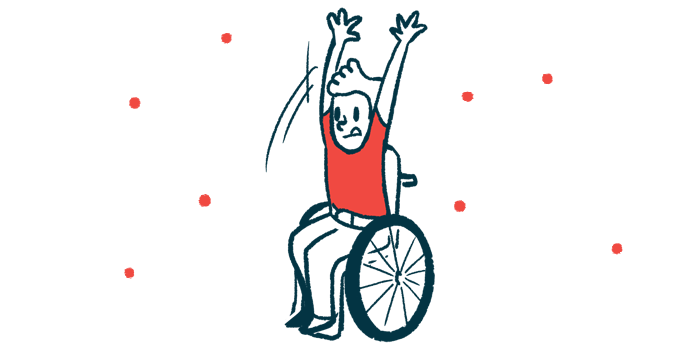Most SMA patients with four SMN2 copies show symptoms in childhood
Study into less clear treatment group 'strongly supports' proactive therapy stance

Without treatment, most people with spinal muscular atrophy (SMA) who have four copies of the “backup” SMN2 gene will start developing symptoms in early childhood, a study indicates.
“The early onset of symptoms in our cohort, coupled with the expected wide clinical variability, strongly supports the characterization of SMA in individuals with four SMN2 copies as primarily a childhood disease,” its researchers wrote, noting that the findings reinforce the importance of early treatment for these children.
The study, “5qSMA: standardised retrospective natural history assessment in 268 patients with four copies of SMN2,” was published in the Journal of Neurology.
Optimal start of SMA treatment less certain with 4 ‘backup’ gene copies
SMA is caused by mutations in the gene SMN1, which provides instructions for making the SMN protein. The SMN2 gene also carries instructions to make this protein, though due to a quirk in its genetic sequence, much less protein can be made using SMN2 gene. Still, SMN2 partly compensates for faulty SMN1 in people with SMA.
Most people have two copies of the SMN2 gene, but some have more — and as a general rule, people with SMA who have more copies of this gene tend to have milder disease.
Over the last decade, three disease-modifying treatments for SMA have become available. These therapies can slow the progression of the disease, but they aren’t very effective for reversing damage that’s already happened. Early treatment, as a result, has become a major priority.
To facilitate early treatment, many governments have implemented newborn screening programs, where babies are tested for SMA soon after birth. It’s widely agreed that infants diagnosed with SMA via newborn screening who have only two or three copies of the SMN2 gene should start treatment as soon as possible, since these children are expected to develop symptoms in the first year or two of life.
But the picture is less clear for SMA babies diagnosed by newborn screening who have four or more copies of the backup gene, largely because little is known about how the disease tends to progress for these patients in the absence of treatment. Earlier recommendations proposed delaying treatment in favor of “watchful waiting” to monitor for symptoms, while more recent ones suggest that treatment should always be given as early as possible.
Using data from an SMA registry covering Germany, Austria and Switzerland, scientists analyzed outcomes for a total of 268 SMA patients who had exactly four copies of the SMN2 gene. Of note, none were diagnosed by newborn screening, and most were born before disease-modifying treatments were widely available.
Median age of 3 for symptom onset in these patients, though variation evident
Results showed a huge range regarding when SMA symptoms first appeared — some patients had noticeable symptoms in the first months after birth, whereas others didn’t show symptoms until well into adulthood. But the median age at onset was 3 years old, meaning that while there’s a lot of variation, the majority of the patients developed symptoms in early childhood.
Researchers also noted that almost all of these people (95%) had noticeable symptoms by the time they were 18.
Most patients were able to walk at some point, though 15.7% were never able to walk — and nearly one-third who walked in childhood went on to lose this ability due to disease progression. Few patients needed a feeding tube (1.1%) or ventilator support (6.3%), although scoliosis (a sideways curve of the spine) affected nearly half (42.8%) of them.
“Our clinical data reflect the severe consequences of SMN deficiency in SMA even with 4 SMN2 copies. The overall picture is one of an aggressive disease with an early onset and a high number of [patients who cannot walk],” the researchers wrote.
“These findings must be taken into account when considering the feasibility of a watchful waiting approach to SMA therapy,” the scientists added, noting that study findings “strongly support a proactive stance involving early initiation of treatment in this subset of SMA patients, particularly if a pre-symptomatic diagnosis is made.”








